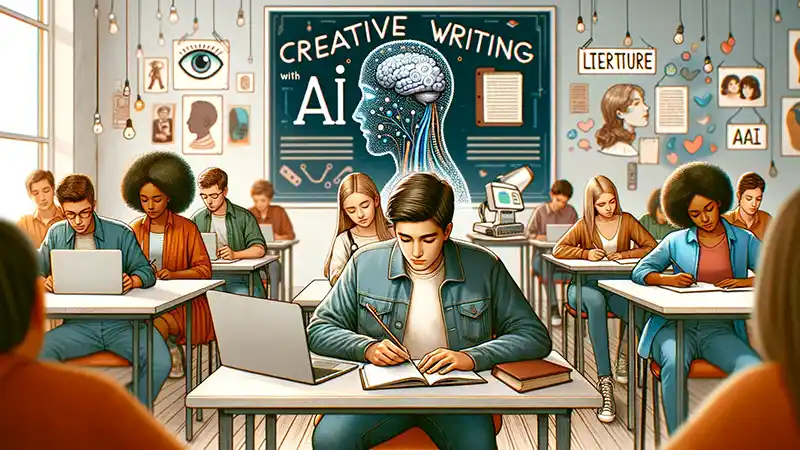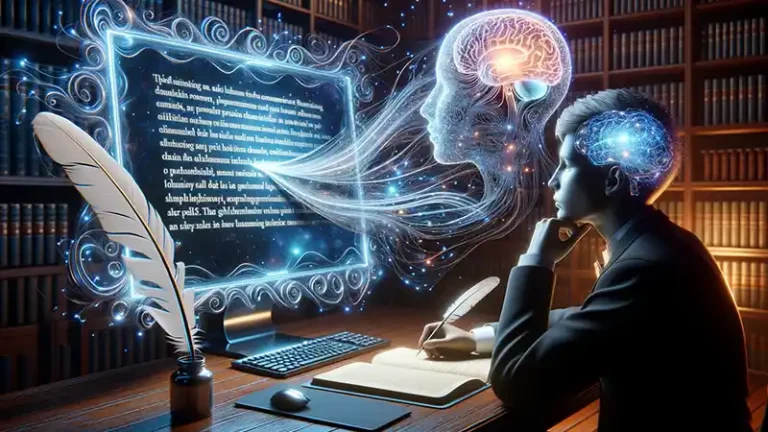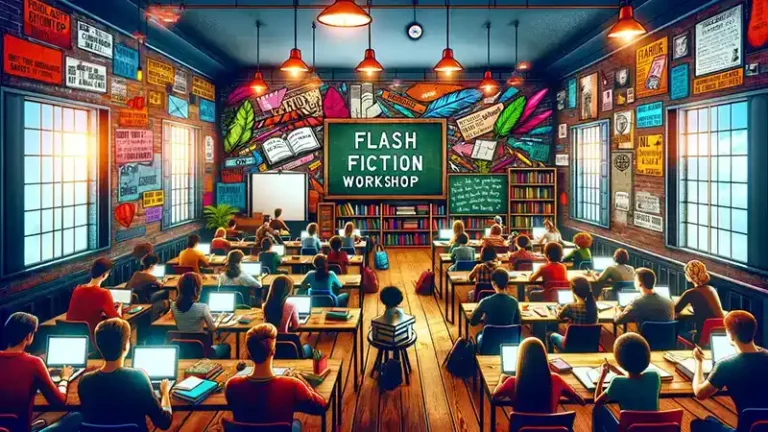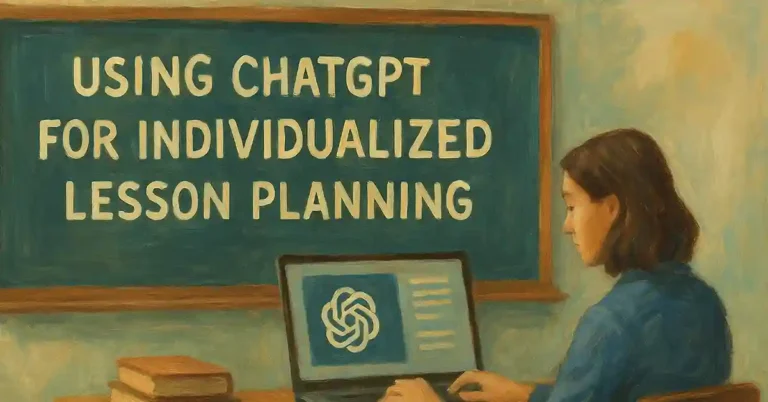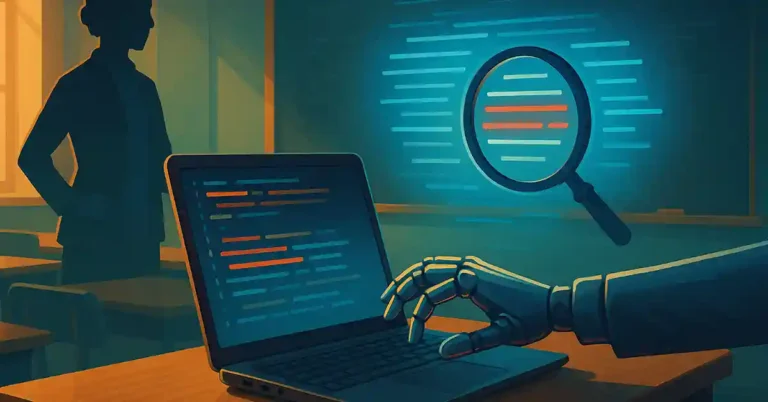Unlocking Imagination: AI in Creative Writing Education
In recent years, Artificial Intelligence (AI) has increasingly become a pivotal element in reshaping educational landscapes. Its integration extends beyond just simplifying administrative tasks to transforming learning experiences. The evolution of AI has enabled personalized learning environments, where students’ unique needs and learning styles are catered to, ensuring a more effective and engaging educational journey. Moreover, AI’s role in data analysis helps educators make informed decisions, adapting curricula to optimize learning outcomes.
The realm of creative writing, traditionally reliant on the human touch, is now experiencing a unique revolution with AI’s introduction. AI in creative writing isn’t about replacing human creativity but enhancing it. This technology provides tools and insights that can inspire new ideas, refine storytelling techniques, and even challenge writers to explore uncharted territories of imagination. By incorporating AI, educators and students are stepping into an era where the boundaries of creativity are expanding more than ever.
Understanding AI in Creative Writing
AI in writing refers to the use of machine learning algorithms and natural language processing (NLP) tools to assist in various aspects of writing. From generating ideas to suggesting improvements in grammar and style, AI can act as an invaluable collaborator in the writing process. Its capabilities include offering prompts, creating story outlines, and even suggesting character developments based on data-driven insights. Importantly, AI tools are designed to augment the human creative process, not replace it, by providing resources that can stimulate and challenge the creative mind.
Examples of AI Tools Used in Creative Writing
Several AI tools have emerged as game-changers in the field of creative writing. For instance, platforms like OpenAI’s ChatGPT have been used to generate creative content, ranging from poetry to short stories, based on user prompts. These tools can produce original content or provide suggestions to enhance a writer’s existing work. Other specialized tools, like Grammarly, use AI to improve the technical aspects of writing, such as grammar, punctuation, and style, ensuring clarity and coherence in creative works. Additionally, AI applications like Sudowrite and ShortlyAI offer features like brainstorming assistance, plot generation, and style suggestions, which are particularly helpful for writers experiencing creative blocks or seeking new perspectives in their storytelling.
Benefits of Combining AI with Human Creativity
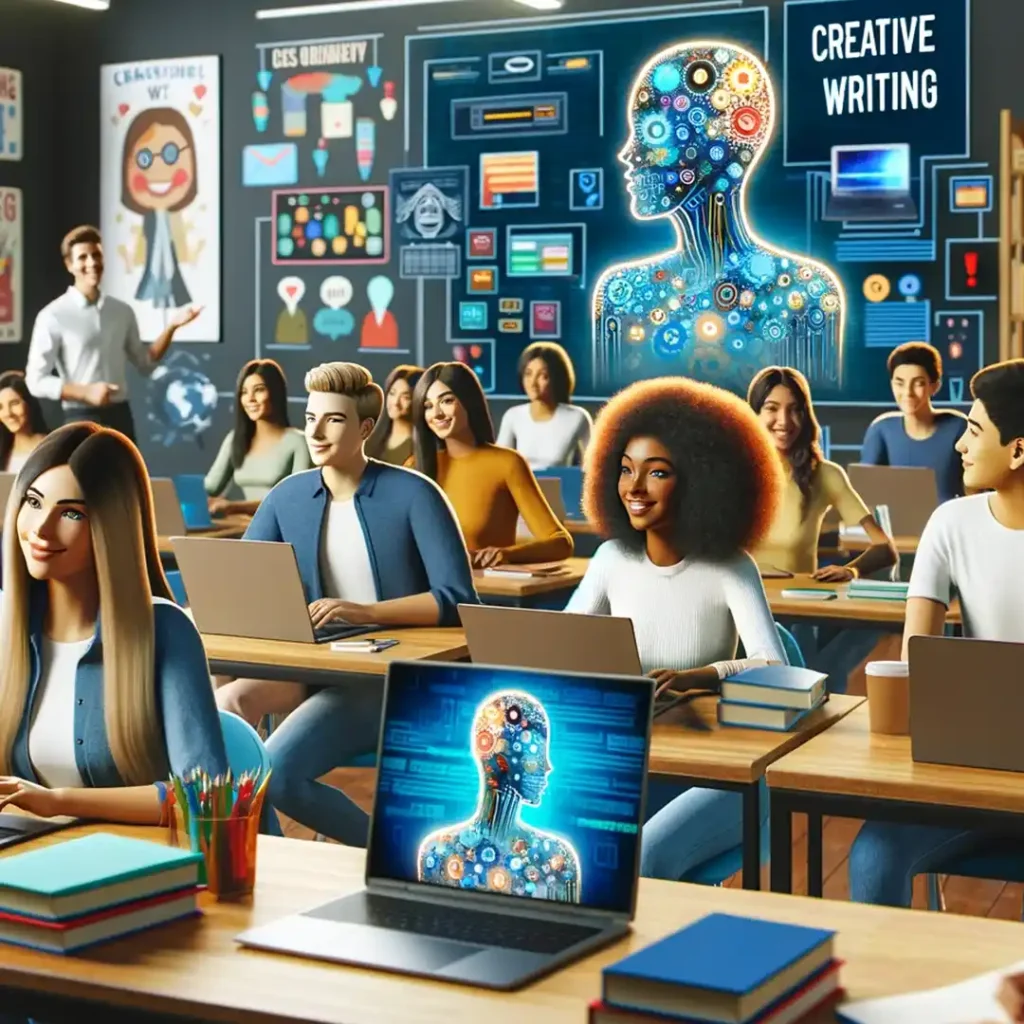
Enhanced Creativity and Idea Generation
One of the most significant benefits of integrating AI into creative writing is the enhancement of creativity and idea generation. AI can offer a plethora of prompts, themes, and narrative possibilities that students might not conceive on their own. This exposure to diverse ideas can spark new thoughts and inspire students to explore genres and styles they haven’t considered before. AI’s ability to process and analyze vast literary databases also means it can suggest unique combinations and twists, pushing the boundaries of conventional storytelling.
Improved Writing Skills and Grammar
AI tools are not only creative partners but also effective tutors. Tools like AI-powered grammar checkers help students refine their writing, ensuring grammatical accuracy and stylistic coherence. These tools often provide explanations for their suggestions, offering an educational component that aids in the learning process. As students interact with these AI systems, they gradually absorb fundamental writing principles, leading to a natural improvement in their writing skills over time.
Personalized Learning Experiences
AI’s adaptability allows for personalized learning experiences in creative writing. By analyzing a student’s writing style and progress, AI can tailor suggestions and challenges to their specific needs. This personalized approach ensures that students are neither under-challenged nor overwhelmed, keeping them engaged and motivated. Additionally, AI can help identify areas where a student might need extra help, allowing educators to provide targeted support.
Implementing AI in Creative Writing Classes
Strategies for Teachers to Integrate AI Tools
The integration of AI into creative writing classes requires thoughtful planning. Teachers can start by familiarizing themselves with different AI tools and understanding their capabilities. It’s important to set clear objectives for using AI – whether for idea generation, grammar improvement, or storytelling enhancement. Teachers should also consider the technology available to their students and choose tools that are accessible and user-friendly. Incorporating AI tools as a part of regular writing assignments or as optional resources can help ease students into this new approach.
Classroom Activities and Projects Involving AI
There are numerous creative ways to incorporate AI into classroom activities. For instance, teachers can use AI to generate writing prompts for short stories or poems. Group projects could involve students using AI to create collaborative stories, where each student contributes to a narrative suggested by an AI tool. Another engaging activity could be comparing stories written with and without AI assistance, allowing students to reflect on the differences and impacts of AI on their writing.
Balancing AI Assistance with Independent Creativity
While AI can be a powerful tool in creative writing, it’s crucial to maintain a balance between AI assistance and independent creativity. Educators should encourage students to use AI as a means to enhance their own ideas, not replace them. Setting boundaries on how and when to use AI can help students develop their own voice and style. It’s also important to foster critical thinking, encouraging students to evaluate AI suggestions and decide whether they align with their creative vision.
A Case Study
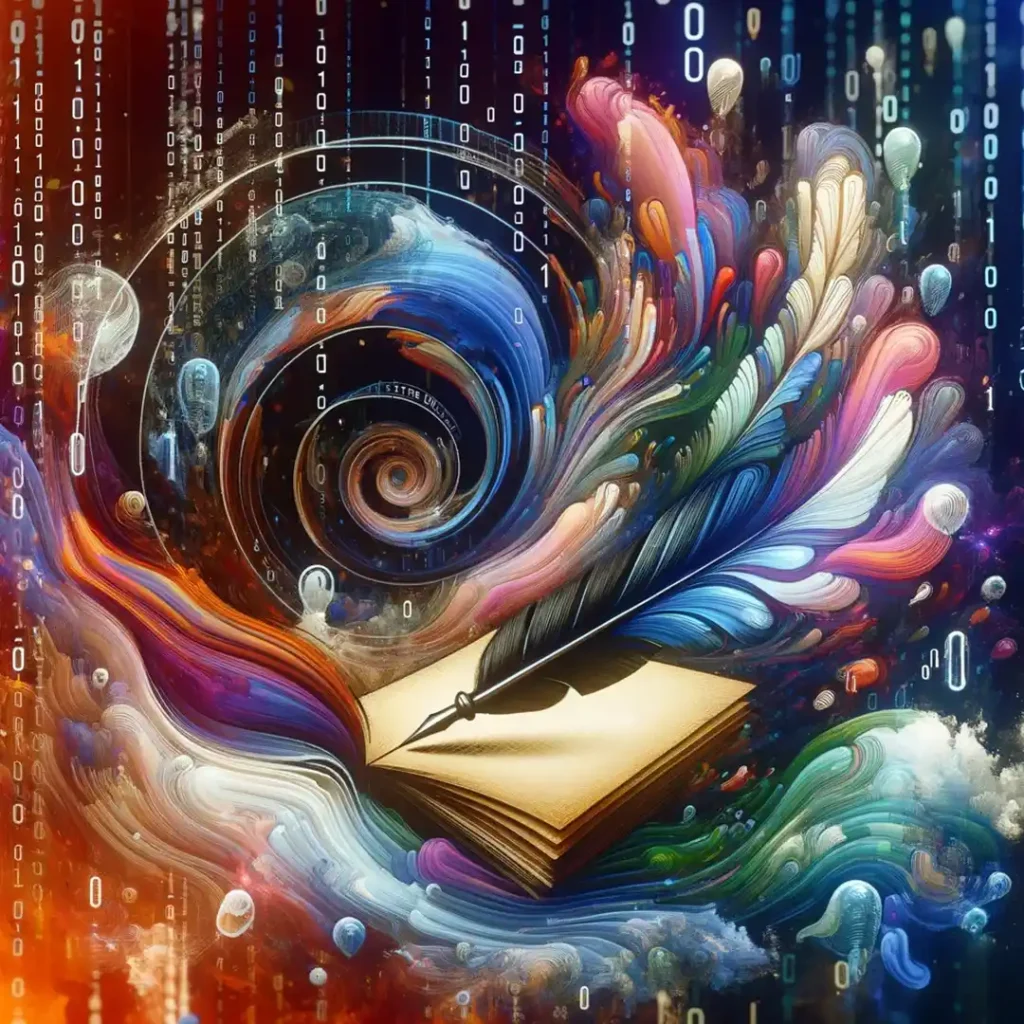
The integration of AI in creative writing education has led to some remarkable success stories. Educators around the globe are finding innovative ways to use AI to enhance the learning experience. One such example is the incorporation of AI in a Greek mythology flash fiction unit. In this case, the AI tool was utilized not just as a writing assistant, but also as an informational resource. It provided students with background knowledge on Greek mythology, offered creative ways to weave these elements into flash fiction, and guided them on the nuances of writing compelling short stories.
Analysis of Student Improvement and Engagement
In the Greek mythology unit, students actively used the AI tool during their writing process. Anecdotal evidence suggested that they found the tool significantly helpful. Notably, the quality of the students’ stories showed a marked improvement compared to previous exercises. The stories were richer in detail, more coherent in structure, and more imaginative in content. This improvement in quality is a testament to the potential of AI in aiding the creative process, providing students with the resources and guidance to elevate their writing.
Here is a link to the writing activity, which is a culminating task for the Greek Mythology unit. It includes the AI assistant that we used in class.
Sample of a Student’s Writing
The room was tense. Despite being 100 degrees in Austin that day, everyone appeared to be inside a massive freezer. Cold, clammy hands shuffled along through documents and personal belongings under the brutal air-conditioning. Everyone was anxious and stressed. Everyone except the defendant Melanthios, who appeared to be fixated on his garish fingernails. Patrick Rothschild, his attorney, looked like a child next to him which didn’t help the fact that he seemed to be straight out of law school.
After what felt like an eternity the Judge entered the room, Honorable Wilkes. The coldness in the room matched the grit on his face. He sauntered to his seat, and the court was suddenly in session.
The case began with the opening statement of one Mr. Friad. He was no day older than 40 yet had no hair on his head. His thin wire-frame glasses were the only thing covering his bald head, which softly glowed in the fluorescent lighting.
“Your honour, my name is Terrance Friad, lawyer of Mr. Phillips. Today I will prove that the defendant is guilty of not just the kidnapping of the late Betsy but also various other accounts of robbery, destruction of property, and animal cruelty.”
Melanthios’ stare into the void only deepened…
Challenges and Considerations
While the benefits of AI in creative writing are evident, there are concerns about originality and dependency. One major concern is that reliance on AI might stifle a student’s own creative voice. It’s essential to emphasize that AI should be used as a tool for enhancement and not as a crutch. Educators must encourage students to develop their unique styles and ideas and use AI as a means to refine and expand these concepts. Striking this balance is crucial to ensure that the essence of creativity remains human-centric.
Ethical Considerations in Using AI for Educational Purposes
The use of AI in education also raises ethical considerations. Issues such as data privacy, the digital divide, and the potential for reinforcing biases present significant challenges. Educators and institutions need to be mindful of these concerns and work towards ensuring that AI tools are used responsibly and inclusively. This involves choosing AI solutions that are transparent in their operations, respecting student data privacy, and ensuring equitable access to technology for all students. By navigating these ethical waters carefully, educators can harness the power of AI in a way that is both beneficial and responsible.
Future of AI in Creative Writing Education
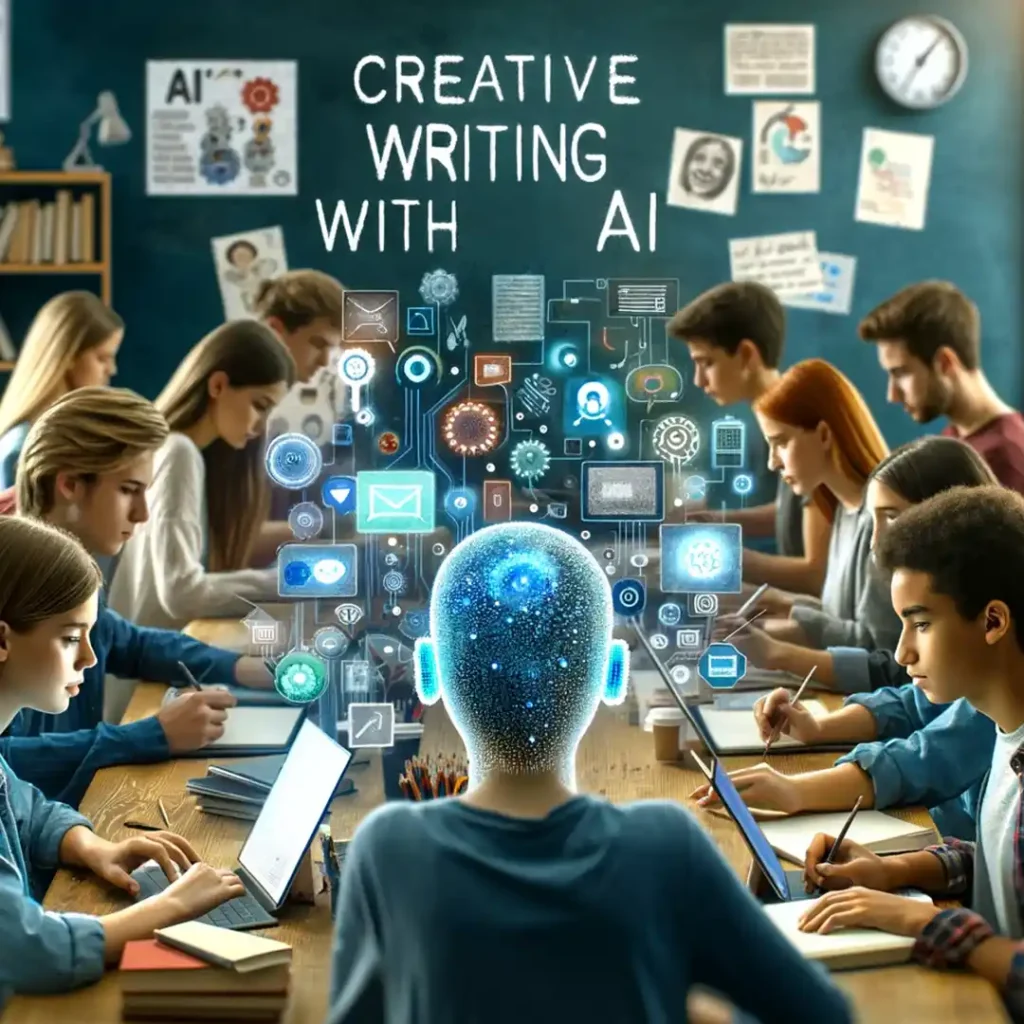
The future of AI in creative writing education is poised for exciting developments. One emerging trend is the increasing sophistication of AI tools, which are becoming more adept at understanding and mimicking human creative processes. This evolution will likely lead to even more intuitive and helpful writing assistants, capable of providing nuanced feedback and suggestions. Another anticipated development is the integration of AI in virtual and augmented reality, creating immersive writing environments that could revolutionize the way students experience and write stories. Additionally, we may see AI playing a larger role in publishing, helping students understand market trends and tailor their writing to specific audiences.
Preparing Students for an AI-Augmented Future
As we move towards an AI-augmented future, it’s crucial to prepare students to navigate this landscape effectively. This involves not just teaching them how to use AI tools, but also instilling a critical understanding of the technology. Students should be encouraged to think critically about the role of AI in their work and understand both its capabilities and limitations. Equipping students with these skills and knowledge will not only enhance their creative writing abilities but also prepare them for a future where AI is an integral part of many professions.
Conclusion
AI in creative writing education offers a plethora of benefits, including enhanced creativity, improved writing skills, and personalized learning experiences. The integration of AI has shown to aid in idea generation, storytelling, and even grammar, helping students produce higher quality work. The potential of AI in this field is immense, and we’re just beginning to scratch the surface of what’s possible.
As we stand at the intersection of technology and creativity, it’s an opportune moment for educators to embrace AI tools in their teaching practices. Integrating AI into creative writing education not only enriches the learning experience for students but also prepares them for a future where technology and creativity intersect in all fields. By adopting AI, educators can inspire a new generation of writers who are adept at blending traditional creativity with cutting-edge technology, ensuring that the art of storytelling continues to evolve and thrive in our increasingly digital world.
